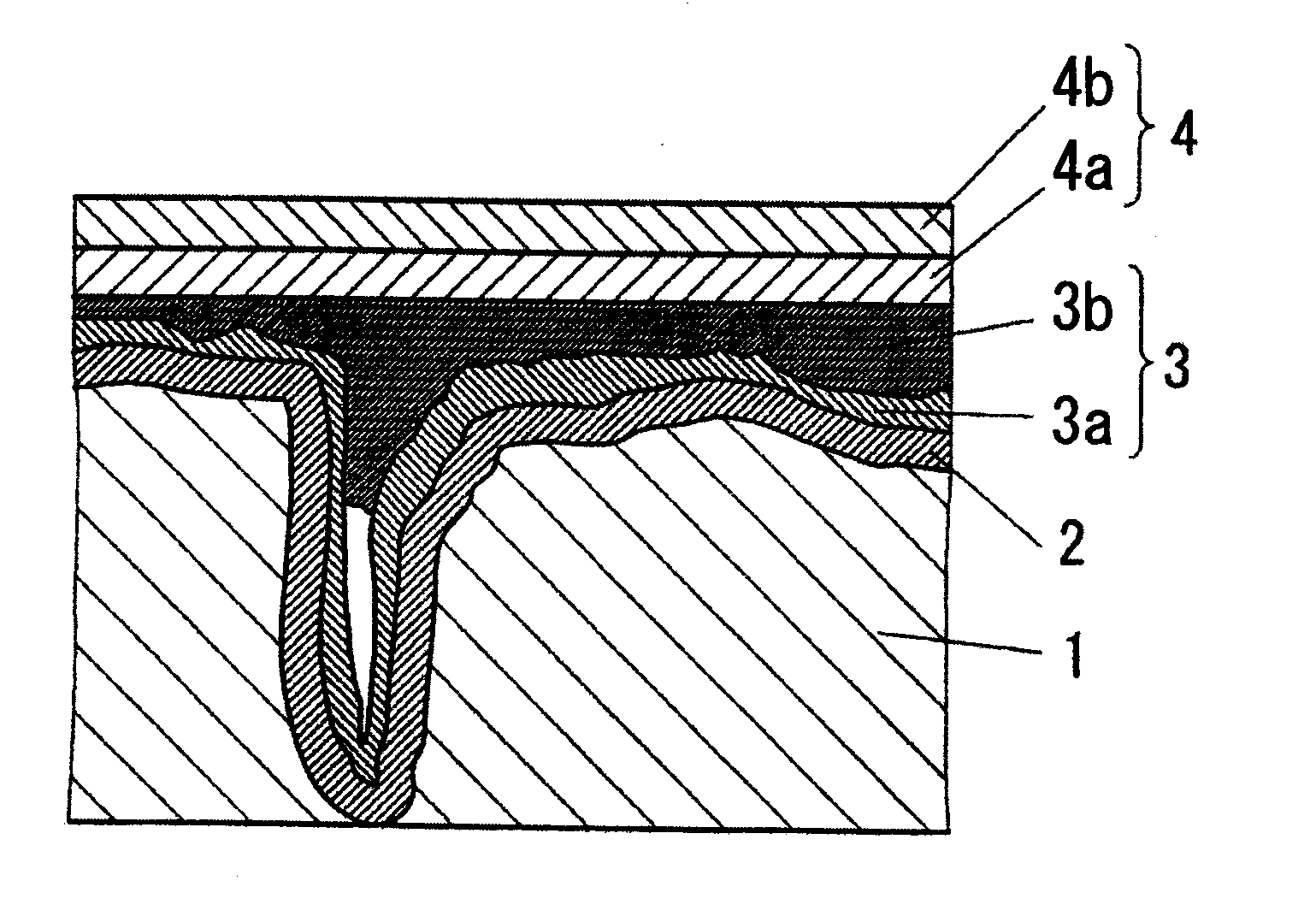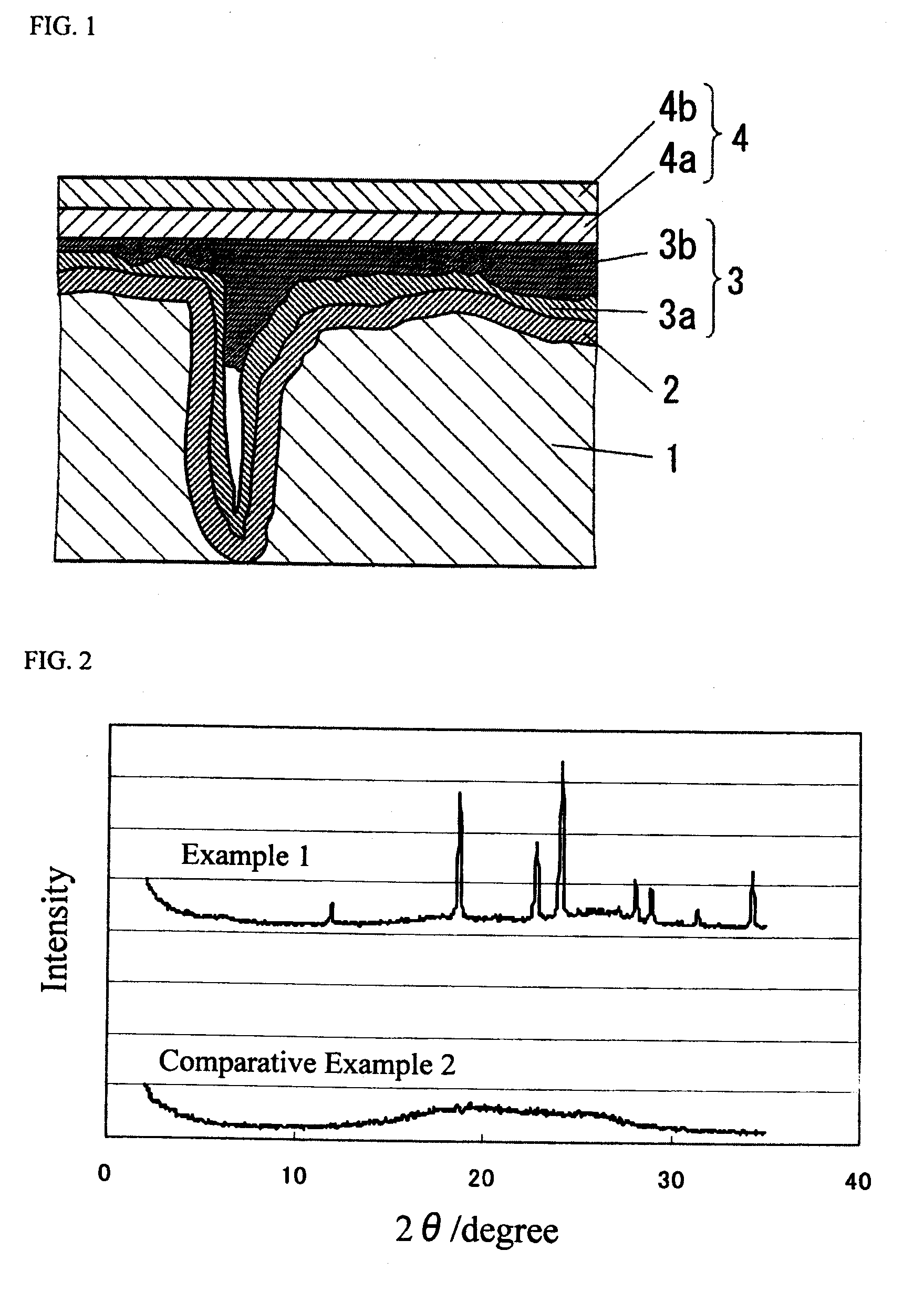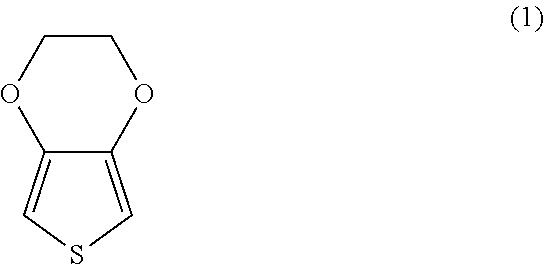Conductive polymer suspension and method for producing the same, conductive polymer material, electrolytic capacitor, and solid electrolytic capacitor and method for producing the same
a technology of conductive polymer suspension and conductive polymer material, which is applied in the direction of non-metal conductors, variable capacitors, conductors, etc., can solve the problems of polyanion making no, excessive presence of undoped polyanion, and high doping ra
- Summary
- Abstract
- Description
- Claims
- Application Information
AI Technical Summary
Benefits of technology
Problems solved by technology
Method used
Image
Examples
example 1
Step (a)
[0078]In 100 g of water, 6 g of an aqueous solution containing 20% by weight of a polystyrenesulfonic acid (weight average molecular weight: 50,000) as the dopant was placed and stirred at normal temperature for 30 minutes. Then, in the resulting solution, 1.28 g of 3,4-ethylenedioxythiophene as the monomer (M1) was mixed and then further stirred at room temperature for 30 minutes. Then, to the resulting solution, 5.08 g of an aqueous solution containing 30% by weight of ammonium persulfate as the oxidant (O1) was added in five separate equal-amount addition operations at 10-minute intervals, then the resulting solution was stirred at room temperature for 50 hours to conduct chemical oxidative polymerization and thus poly(3,4-ethylenedioxythiophene) was synthesized. In this case, the solution turned from yellow through pale green, green and pale navy blue to black.
Step (b)
[0079]The obtained solution was filtered by using a reduced pressure filtration apparatus to collect a p...
example 2
Step (a)
[0082]In 100 g of water, 6 g of an aqueous solution containing 20% by weight of a polystyrenesulfonic acid (weight average molecular weight: 50,000) as the dopant was placed and stirred at normal temperature for 30 minutes. Then, in the resulting solution, a solution prepared by mixing 1.28 g of 3,4-ethylenedioxythiophene and 10 g of methyl sulfoxide as the monomers (M1) was placed and then further stirred at room temperature for 30 minutes. Then, to the resulting solution, 5.08 g of an aqueous solution containing 30% by weight of ammonium persulfate as the oxidant (O1) was added in five separate equal-amount addition operations at 10-minute intervals, then the resulting solution was stirred at room temperature for 50 hours to conduct chemical oxidative polymerization and thus poly(3,4-ethylenedioxythiophene) was synthesized. In this case, the solution turned from yellow through pale green, green and pale navy blue to black.
[0083]A polythiophene suspension was produced by op...
example 3
[0084]A polythiophene suspension was produced by operating in the same manner as in Example 1 except that in the step (a) an ethanol solution containing 30% by weight of iron(III) p-toluenesulfonate as the oxidant (O1) was used in place of the aqueous solution of ammonium persulfate. In the same manner as in Example 1, a conductive polymer film was formed, and then the conductivity of the conductive polymer film was derived. The result thus obtained is shown in Table 1.
PUM
| Property | Measurement | Unit |
|---|---|---|
| temperature | aaaaa | aaaaa |
| temperature | aaaaa | aaaaa |
| reaction time | aaaaa | aaaaa |
Abstract
Description
Claims
Application Information
 Login to View More
Login to View More - R&D
- Intellectual Property
- Life Sciences
- Materials
- Tech Scout
- Unparalleled Data Quality
- Higher Quality Content
- 60% Fewer Hallucinations
Browse by: Latest US Patents, China's latest patents, Technical Efficacy Thesaurus, Application Domain, Technology Topic, Popular Technical Reports.
© 2025 PatSnap. All rights reserved.Legal|Privacy policy|Modern Slavery Act Transparency Statement|Sitemap|About US| Contact US: help@patsnap.com



